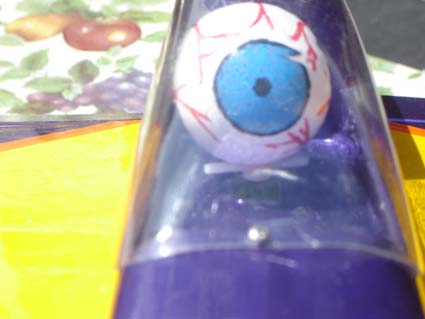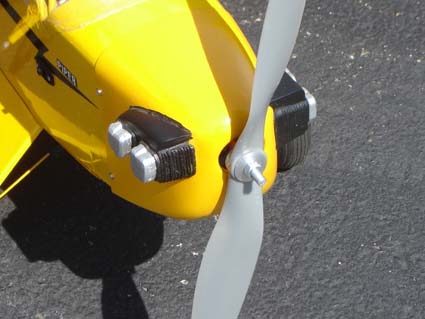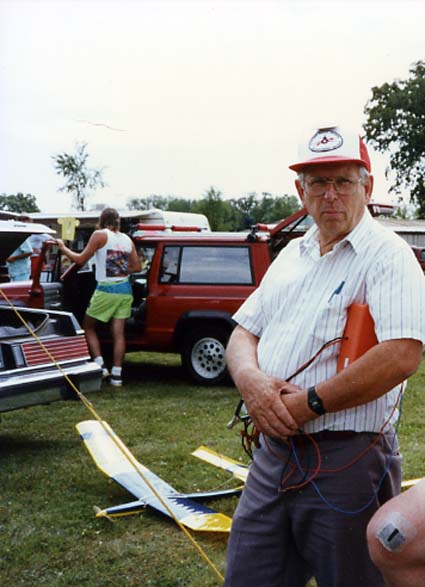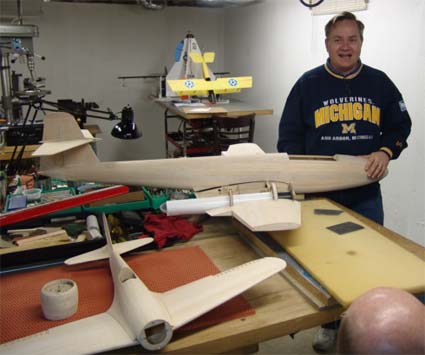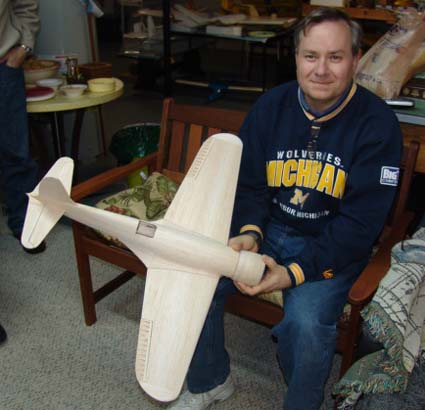 |
Flying High With Electric Power!
The Ampeer ON-LINE!
Fly the Future - Fly Electric! |
Site Table of Contents
| President: | Vice-President: | Secretary/Treasurer: |
| Ken Myers | Richard Utkan | Rick Sawicki |
| 1911 Bradshaw Ct. | 240 Cabinet | 5089 Ledgewood Ct. W. |
| Commerce Twp., MI 48390 | Milford, MI 48381 | Commerce Twp., MI 48382 |
| (248) 669-8124 | (248) 685-1705 | 248.685.7056 |
 | ||
| Board of Directors: | Board of Directors: | Ampeer Editor |
| David Stacer | Jack Lemon | Ken Myers |
| 16575 Brookland Blvd. | 8908 Sandy Ridge Dr. | 1911 Bradshaw Ct. |
| Northville, MI 48167 | White Lake, MI 48386 | Walled Lake, MI 48390 |
| 248.924.2324 | 248.698.4683 | 248.669.8124 |
| Mailed Ampeer subscriptions are no longer available | ||
| The Next Meeting:
Date: February 4 Time: 7:30 p.m. Place: Jim Young's house (see this issue for details) | ||
|
From: Ned Watts nedwatts@mac.com What do you recommend for small 700mAh battery connectors? I use power poles for the bigger stuff. My set up here is a 2S Li-Poly drawing probably 6-7 amps max. I have some 1.8 mm bullet connectors that physically look about the size that I need. This is going in the E-flite L-4 Grasshopper. 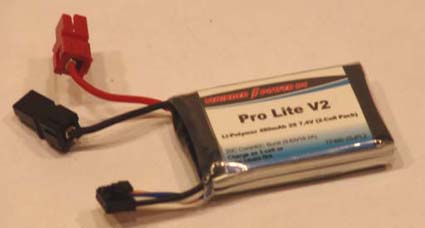 I use APP on everything so that I don't have to make up different charge leads for my CellPro 10S. For smaller applications I cut the housing of the APP. There is a mark on the housing that I use as the cut line. I only have one small Li-Poly. It is a TP 240mAh two cell. I've attached a photo. You can use bullets or Deans or whatever you like. I just like keeping my stuff the same. Personal preference.
Hobby Lobby eRC P-51 Mustang Battery Polarity Reversal Warning
For those of you who don't know, the current batch of eRC P-51 Mustangs from Hobby Lobby have an issue with the battery polarity. They use the same connector as the single cell Horizon batteries but the polarity is backwards.
The battery adapters will be free, according to Jason's post. A Bristol, A Cub and An Eyeball, Along with some Bits & Pieces
May 4, 2009 Hi Ken, I just uploaded the final photos of the EyeBall build to RC Universe. I'm also including some EyeBall shots as I don't know if you can upload them from RCU. I'm not sure how much bandwidth I've used so if you want more for the Ampeer let me know. Walt's Eureka Models Eyeball Build Link: www.rcuniverse.com/forum/m_8478975/mpage_1/key_Eyeball/tm.htm 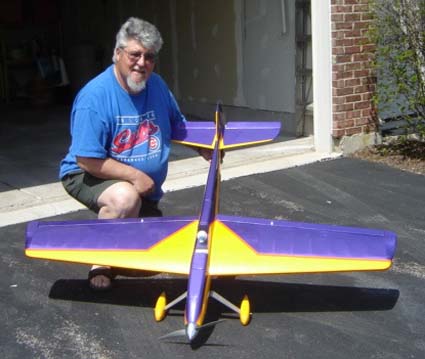
I flew the Balsa USA Bristol M1a yesterday. It is a great WWI flier; far more aerobatic that I had expected: loops. split esses, immelmanns, stall turns and even quite good rolls. Very slow landing speed, but a bear to handle both on landing and takeoff on a hard surface runway (hey, it's a WWI airplane). It is very wind sensitive on the ground and in air (see comment above) (-: I couldn't stall it, so it's probably nose heavy, but I added 2 oz of insurance to the nose for the first flight. Power as I have it set-up is adequate, but I could use a little more as most of the time I'm at full throttle (on the other hand they were test flights and it was windy). Set-up: Aveox 36-38-3 geared 2.5:1, 6 A123s, APC18x8E with a Great Planes Silver Series 65-amp ESC. You can see it gets plenty of cooling air. The weight is 8 lbs. 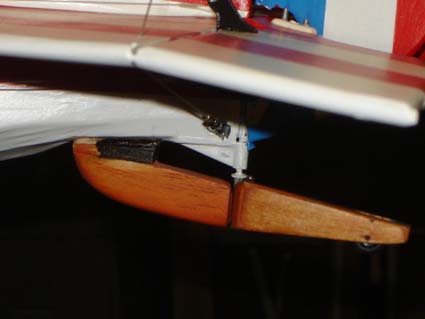 I am particularly pleased with my steerable tailskid with a hidden wheel. I thought it would do better on our asphalt runway.  The covering is Solartex brushed with latex and shot all over with Krylon matte finish. The decals are from Major Models. None of the wires and cables are functional, they are all because I can't fly a "naked" WWI bird (-: 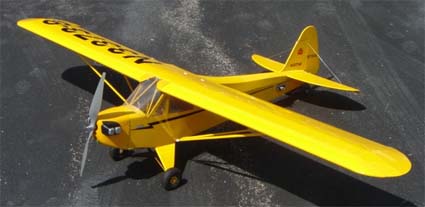
I've also attached a couple of shots of the Cub (how many do you need? It's a Cub!). Note the engine cylinders on both sides. I built the right side bank from balsa scrap. This is a BITSA; bits of a partial kit and two wrecks all given to me by others. Power is a Maxx 5XXX motor on 6 A123s with an APC 18x10E prop. It's not the best use for the motor, but it's what I had and it flies the Cub very well at 1/2 throttle. Walt: May 17 - Maidened the EyeBall today. How'd it go --how about five flights?! Flew like an EyeBall. All I needed was to balance the CG with the control throws. Landings are a breeze, but take-offs require some finesse. She does every maneuver I know very well. I even got in a couple of reasonable knife-edges. The Hacker B50-16 XL with a 12x6 prop flew it very well giving me seven minutes on a 6S “A123” 2300mAh pack. I put 2.07Ah back in after the flight. Walt:x I was going through some damaged Li-Poly packs and was frustrated by having to throw away two good cells because one cell of a 3 cell pack was bad. One way around it is to electrically isolate the bad cell and use it as a two-cell pack, but the bad cell is dead weight. I have read of the frustrations others and myself have had trying to separate pre-built packs. About that time I knocked over a can of WD40 that was on my workbench; that, in turn reminded me that WD40 is an excellent solvent for removing tape residue. I sprayed down the gap between two cells; waited a few minutes, then used an old business card to work the cells apart. Worked like a dream with no damage to the good cells. I saved eight cells this way. Giving me 2 three cell packs and one two cell pack.
Walt: Here's something for you to think about. I've been flying the Eyeball with a Hacker B50-16XL, APC 12x8E prop and 6 “A123” 2300mAh cells; pulling a little over 40 amps. I wanted a little more guts, so I decided to try brand-new 6S Turnigy 2600mAh 40C Li-Poly (2 three cell packs in series). It pulled 123 amps! It took an APC 10x5E prop to get the amps down to 63. When I checked against the A123s, just 34 amps. Is this because of lower resistance in the Li-Poly battery? Ken: The numbers make no sense to me. It just won't happen, all else being equal. Having all the numbers, volts, amps and rpm would be helpful.
Walt: I'm going test everything again this week. I agree the numbers make no sense, however E-calc (I still can't get the hang of DC) does suggest that the B50-16XL works best with a gearbox rather than direct drive. I'll let you know what I find out. Hope you didn't tear the rotator cuff in a bike accident. It's a toughie from which to recover. (Dang, I did. KM)
PT-17 (and 13 and 18)
I read your notes on the Stearman in the latest Ampeer and was surprised that no one (including you) seemed to know that the Stearman had a lifting tail. Maybe the manufacturer changed the prototype's stabilizer to a lifting section to overcome the same problem that the RC Groups contributors had.
Some Answers and Suggestions for Phil Alvirez Regarding His AR6000 Question in the January Ampeer In the article "Spektrum AR6000 Report & Question" in the January 2010 Ampeer, reader Phil Alvirez noted that his Spektrum AR6000 receivers had been very good overall, but he had a problem with one where he lost control of the plane at the Mid-Am. The "problem" persisted until the receiver was replaced. He now uses that receiver only for bench testing. He wondered if anyone else ever had a problem like this.
From Joe Hass: On the receiver problem... I would try rebinding but with very deliberate actions i.e. transmitter, bind plug inserted (fresh bind plug - they wear out), receiver powered up (with a battery, not an ESC), etc.
Joe followed up with more information: I quickly wrote about the problems one writer had with a single Spektrum receiver. The theme that I hope I conveyed was that he should slowly and deliberately go through the whole rebinding process. Familiarity breeds contempt, and when it comes to binding any of the 2.4 systems this can be painfully true. Chris and I have more than once sped through the process and then had strange things happen. I have watched others have problems too when they went too fast. I think that what is actually happening is that switches are not left off long enough to allow system voltage to actually go to zero. Thus quickly powering back up causes strange things. That's my opinion anyway. All I know is that when I have redone the binding process slowly and deliberately the problems disappeared.
Quickly turning the transmitter or aircraft on and off can also cause strange things to happen. We had one situation where one elevator, on a two elevator aircraft, began slowly oscillating up and down after the aircraft was turned on and off quickly. All of the "experts" could not figure out what was going on. This was an aircraft that flew extensively for a year. Everything was powered down for a count of 10, then turned back on. Problem gone.
Chris and I were talking shop. He reminded me, and this problem is covered in detail at the Spektrum website. He also noted that the LED on the receiver can tell you volumes about what is going on with the receiver during use. The key is to NOT TURN OFF RECEIVER POWER UNTIL YOU LOOK AT THE LED. If the LED is flashing something has happened. The website gives the details.
This is just to let you know I had a problem with one this summer. I had a problem and lost control of the model and put it into the ground, but without damage.
Phil it looks like if you send it in to Horizon Hobby, you might be able to have a "flying" receiver once again, rather than a bench tester. KM Thanks to the Folks That Make Indoor Flying Possible at the Ultimate Indoor Soccer Arenas
I am writing to thank you for all your complimentary comments about our indoor flying at Ultimate Soccer Arenas. I must emphasize that, while the Skymasters have taken the lead on this project, it simply would not be possible without the sponsorship support of the Romeo Skyhawks, the Radio Control Club of Detroit, the Greater Detroit Soaring and Hiking Society and our local hobby shops including Flight Line, Prop Shop, RC Hobbies and Nankin Hobbies. We have also received sponsorship from airlandseahobby.com and Ready to Fly Planes. Hobby Lobby, Hobbico and Horizon help too. These folks all deserve the thanks of the modeling community.
I hope you can share this with your readers. Joe Hass
Thanks Joe for the reminder that this great endeavor is the result of efforts and finances by a lot of folks. Congratulations to everyone of the supporters for providing so a great facility to the modelers here in southeastern Michigan. KM A note from Ken:
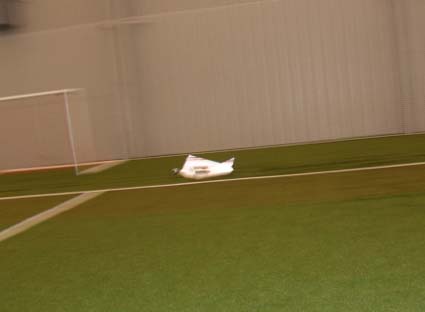 After I got home, I sent an email to Joe asking for some of the details. He sent the following in response: I am working on an article for Model Aviation.
Joe Vic Walpole
I received a forward from Rod Clark regarding Vic Walpole. Vic recently passed. Some Ampeer readers will not be familiar with this name, but Vic was a true electric flight pioneer. He did not invent electric flight, design great e-planes or other notable things like that, but he was a fantastic promoter of the then "new" propulsion system!
The Board of EMFSO regrets to inform you of the death of Vic Walpole. On behalf of the membership we offer our sincere condolences to his family and the many friends he made in RC hobby. Vic was a pioneer of electric flight and a founding member of EMFSO. His membership number is "1".
Jack Higgins, Secretary By Stan Shaw In the spring of 1985, at the suggestion of Vic Walpole, who was actively promoting electric- powered model flying, a meeting was organized at Doug Forrester's home. Stan Shaw, Bud Wallace and Jack Linghorne also attended. After discussions of the need for an electric flyers group and the need for an executive, the group decided on Stan Shaw as President, Doug Forrester as Vice-President, Jack Linghorne as Treasurer and Vic Walpole as Secretary. Vic also appointed Steve Lentzer as Editor. The membership fee was set at ten dollars and the group was to be called the "Electric Model Flyers of Southern Ontario".
Vic was a true gentleman, promoted this hobby tirelessly and will be missed. You can visit the EMFSO site at www.emfso.org
The January EFO Meeting Because of the poor driving conditions on January 7, the meeting was pushed back a week to January 14. Bill Brown was the gracious host. Thank you Bill! And thanks for all the good snacks. Bill started the meeting by sharing photos of his Honor Flight trip to Washington, D.C. On the trip, he even wore his WWII uniform, and was one of only two folks to do so. We owe Bill, and all the WWII veterans, more than we can ever say with just thanks. We all salute you folks! Most of the "gang" had arrived by 7:30 and we were looking forward to sharing our models and questions. Roger Wilfong lead off the show and tell with his new Mini Telemaster. He purchased off of ebay. He got a very good price on it and it included both the 3-channel and 4-channel wings. He has powered it with a 250 watts in power system using a 3S "A123" 2300mAh battery pack and brushless outrunner. 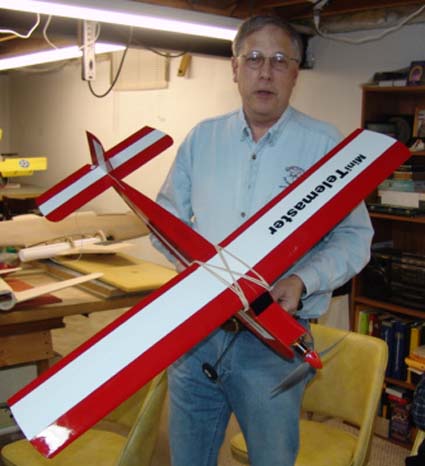
Jim Young had two planes to share with us. He brought in his Gloster Meteor. This version is quite a larger, twin ducted. He has a build thread on RC Groups where you can check in on his progress.
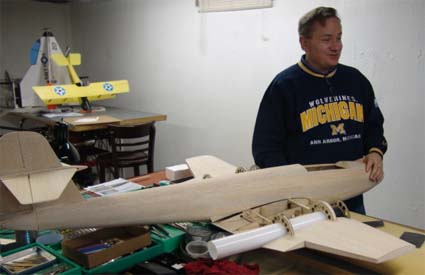
He is also working on a new version of his Hughes H-1. The power system in this new version should motivate it quite a bit faster. 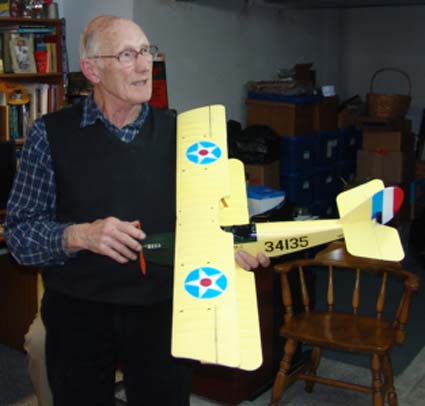 Bill Brown shared several of his new planes with us, including the Jenny that he got for Christmas. It is ready to fly now.
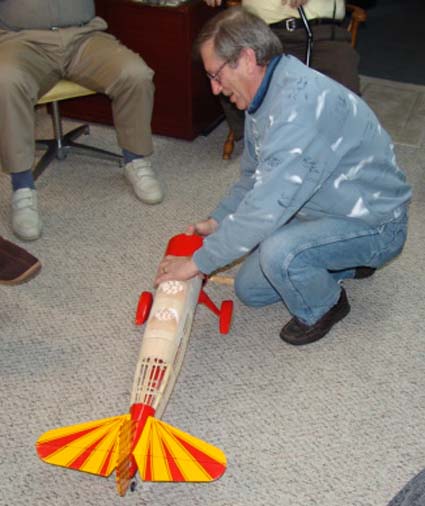 Ken Myers showed off the progress on his conversion of the E-flite PT-17 ARF to the Super Stearman N56772. It is coming along very slowly, but is looking pretty good. 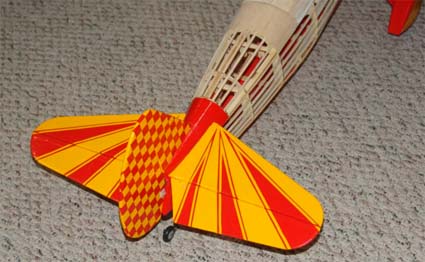 As usual, there was a lot of good "plane" talk at the meeting.
|
To Reach Ken Myers, you can land mail to the address at the top of the page. My E-mail
address is:
KMyersEFO@mac.com
EFO WEBsite: http://homepage.mac.com/KMyersEFO/
